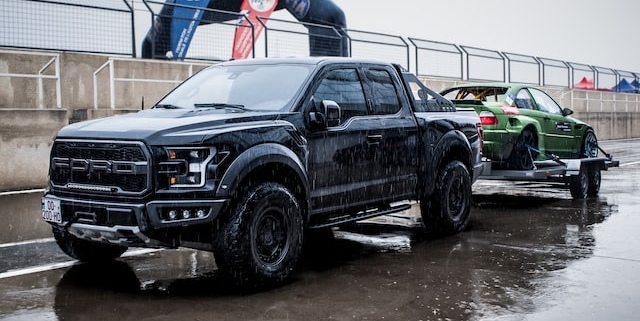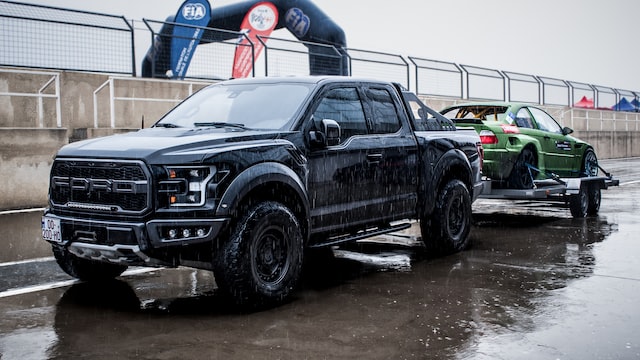DIY Truck Repair: Save Money and Learn How to Save on Truck Repair Costs
One of the most expensive parts of owning a truck is keeping it in tip-top shape. These giant machines are no small undertaking and come with hefty price tags that can add up over time. Luckily, there are plenty of ways to reduce repair costs and get more value out of your investment. As with any vehicle, a truck will need routine maintenance and periodic repairs along the way. Keeping an eye on these indicators can help you catch problems before they become significant issues. In addition, fluids and filters must be replaced at specific intervals to keep your truck running smoothly. Here are some ways to save money on regular maintenance and unexpected repair bills.
Change Oil and Filters More Frequently
You might notice that your engine oil gets dirty sooner when driving in certain conditions, such as when pulling a heavy load. You might also see that it takes longer to clean that dirt out. This could indicate that your oil is too thick, which could lead to potential problems. Keeping your oil clean and fresh can help your engine run smoothly and last longer. It can also protect your investment against damage caused by dirty or inadequate oil. The good news is that you can clean your oil more frequently without causing damage. You should also regularly change your air filters, even if they don’t look dirty. Dirty air filters can cause issues with your truck’s performance and reduce gas mileage. While new air filters can be a bit expensive, they’re a minor cost compared to the damage a dirty filter can do.
Check Vents and Hoses Before Driving
If you drive tractors for a living, you may know to check the radiator pressure, engine oil pressure, and transmission temperature before going. But, even if you don’t drive a truck for a living, you should check these things before heading out on a long trip or just a brief drive in hot weather. If the radiator pressure is too low, you might have a leak. If the oil pressure is low, your engine could have a problem. If the transmission temperature is very high, you might have a problem with the transmission. These are signs of potential problems, and you should have them checked out as soon as possible to avoid more significant problems down the road.
Check Tires and Rotate Them
You don’t have to replace tires right when they’re worn out, but you do need to replace them when they’ve reached their maximum useful life. Additionally, you should rotate your tires every 5,000 to 10,000 miles as part of your regular maintenance schedule. Not only does rotating your tires help them last longer, but it also reduces wear on your truck’s suspension and tires. Not only will this extend the life of your tires, but it will also reduce the amount of fuel it takes to get you where you want to go. If you only rotate your tires, you could put additional wear and tear on your truck’s suspension. But, if you rotate your tires and change their position, you not only extend their life but also save money on repairs.
Get a Professional Inspection
Whether you have a new or used truck or your truck is equipped with modern technology or a classic engine, it is always a good idea to visit a professional mechanic to conduct a thorough inspection before you buy it. Additionally, a maintenance check every couple of years can save you money in the long run by catching minor problems before they become significant issues. A visual inspection is often enough for routine maintenance, but you may also want to consider having your truck thoroughly inspected by a mechanic. Again, this can help you catch problems before they become major issues, saving you time and money in the long run. Additionally, if you have a used truck without its manual, fortunately, you can find the exact manual for your vehicle model on Kenworth Repair Manuals Online.
Don’t Overlook the Warranty
If your new vehicle is still under warranty, you might be able to get repairs done for free or at a reduced cost. If you are driving a used truck, you might be able to transfer the warranty to you the original owner. Check with your vehicle manufacturer to see what is covered under warranty and what is not. Use this information to your advantage. If the warranty does not cover repairs, you might be able to negotiate a lower price. It’s worth a shot, and you could save yourself some money.
Know Your Batteries
If you use a vehicle starter, you know that a weak battery can cause all sorts of problems, from not starting your vehicle in cold weather to not starting at all. Replacing your batteries regularly is one of the best ways to avoid these problems and save money on repairs. There are a few different types of batteries, so it’s a good idea to know what type your truck needs. Deep-cycle and marine batteries are designed for heavy equipment but can also be used in trucks. It’s best to consult your manufacturer’s manual to see what type of battery your truck needs. Deep-cycle batteries are often cheaper than car batteries, so they can be an excellent option for saving money.
Install a Negative-Grounding Kit
You may have a voltage-drop problem if your truck often has an engine misfire, spark plug fouling, or an electrical spark knock. This means too much resistance in the electrical system, which lowers the voltage and causes the above problems. A negative-grounding kit is a relatively cheap and easy fix that can help you solve this problem. It’s worth a try if your truck is having these issues. Negative grounding is not a problem for most vehicles, but for some trucks, it can provide a solution for voltage loss. It is probably the least expensive way, other than re-wiring, to solve the problem, and it is worth a try if your truck has these issues.
Conclusion
A truck is an investment, and keeping it in good shape can save you a lot of money in the long run. Follow these tips to keep your vehicle running smoothly and save money on repairs. When you take good care of your truck, it will take good care of you. You can also save money by changing your oil more frequently, rotating your tires, getting a professional inspection, and installing a negative-grounding kit.





Leave a Reply
Want to join the discussion?Feel free to contribute!